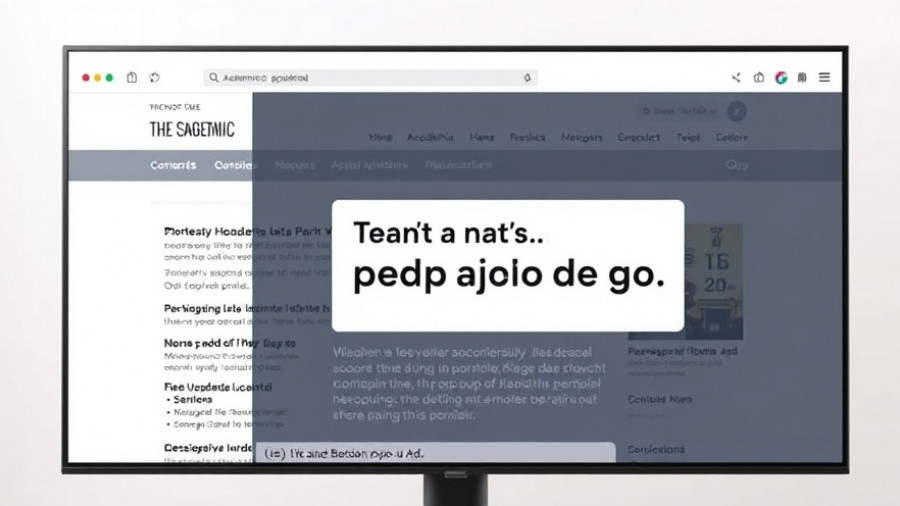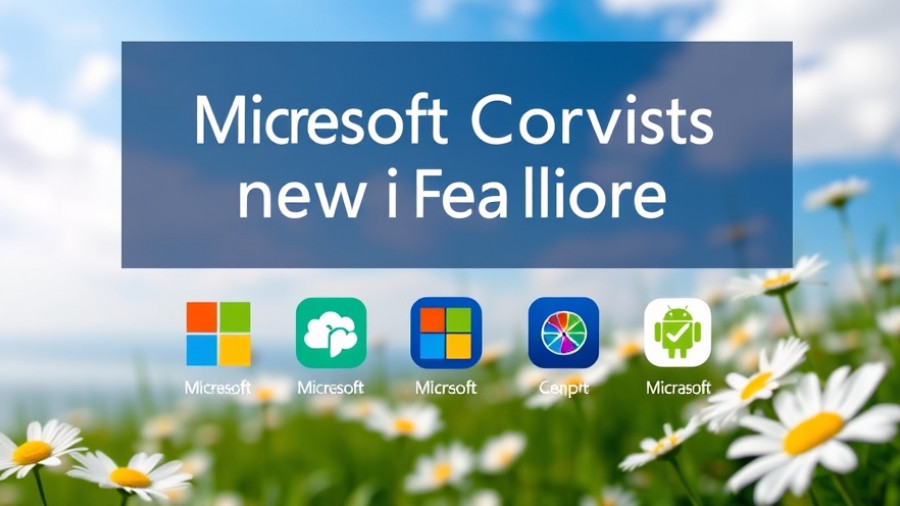
Microsoft’s Copilot Expands Horizons with Claude AI Models
Microsoft has taken significant strides in diversifying its artificial intelligence offerings by introducing Claude models from Anthropic into its popular Copilot AI assistant. As competition in the AI landscape intensifies, these models stand as pivotal tools, showcasing Microsoft’s commitment to fostering innovation while reducing dependence on OpenAI.
The Evolution of Microsoft's AI Strategy
Microsoft recently revealed new functionalities within its Copilot, explicitly integrating two of Anthropic's cutting-edge models: Claude Sonnet 4 and Claude Opus 4.1. This decision aligns with the company’s broader strategy of minimizing reliance on OpenAI's technology, a move spurred by OpenAI's evolving partnerships, particularly with tech giant Google. By embedding Anthropic's models, Microsoft aims to enhance the versatility and reliability of its AI offerings, providing users with options that cater to diverse tasks and preferences.
How to Access Claude Models in Copilot
Microsoft 365 Copilot subscribers will now observe a new “Try Claude” button when utilizing the Researcher agent within Copilot. Engaging this feature allows users to switch from OpenAI’s default models to the Claude Opus 4.1 model, designed to excel in managing complex, multi-step tasks. This flexibility is emblematic of Microsoft’s commitment to user-centric design, enabling seamless transitions between different AI frameworks to optimize productivity.
A Closer Look at Claude Models
The Claude models, externally hosted and subject to Anthropic's service terms, bring robust capabilities to Copilot Studio, a platform for crafting custom AI agents. Users can now mix different AI models—such as those from OpenAI and Anthropic—in their projects, fostering innovative solutions tailored to end-user needs. This mix-and-match feature underscores a shift towards customized AI solutions in the workplace, facilitating a bespoke approach to productivity.
The Wider Implications for AI Development
This strategic move to incorporate Claude models signifies broader trends in artificial intelligence development. As more companies pursue diverse partnerships, the landscape may shift towards a more collaborative model, wherein AI systems can leverage the best features from various developers. Alignment with Anthropic, a company renowned for its ethical AI principles, could also bolster Microsoft’s reputation in responsible AI development.
Future Predictions: What Lies Ahead for AI?
As Microsoft continues to invest in Anthropic and other AI firms, we may see a host of new features and functionalities in the coming years. The emphasis on distinct AI models suggests that future updates will allow users greater control over their AI interactions, leading to more refined and effective user experiences. This trajectory highlights the increasing importance of adaptability in AI technologies, setting the stage for innovations that align closely with user needs.
Counterarguments and Diverse Perspectives
While the diversification of AI tools is beneficial, there are concerns regarding the fragmentation of the market. Many argue that too many options may overwhelm users and lead to inconsistencies in performance. Balancing the need for innovation with user-friendliness will be paramount as Microsoft rolls out these new features. Additionally, the ongoing competition with other tech giants like Google adds another layer of complexity, raising questions about the longevity and sustainability of these new partnerships.
Conclusion: Why Engaging with Copilot Is Essential
The ongoing evolution of Microsoft’s Copilot is a testament to the rapid advancements in the realm of artificial intelligence. By leveraging the Claude models, users not only benefit from cutting-edge tools but also engage in a defining moment of AI history. To make the most of these developments, it is essential for professionals and organizations alike to explore these options, maximizing their AI potential today.
 Add Row
Add Row  Add
Add 




Write A Comment